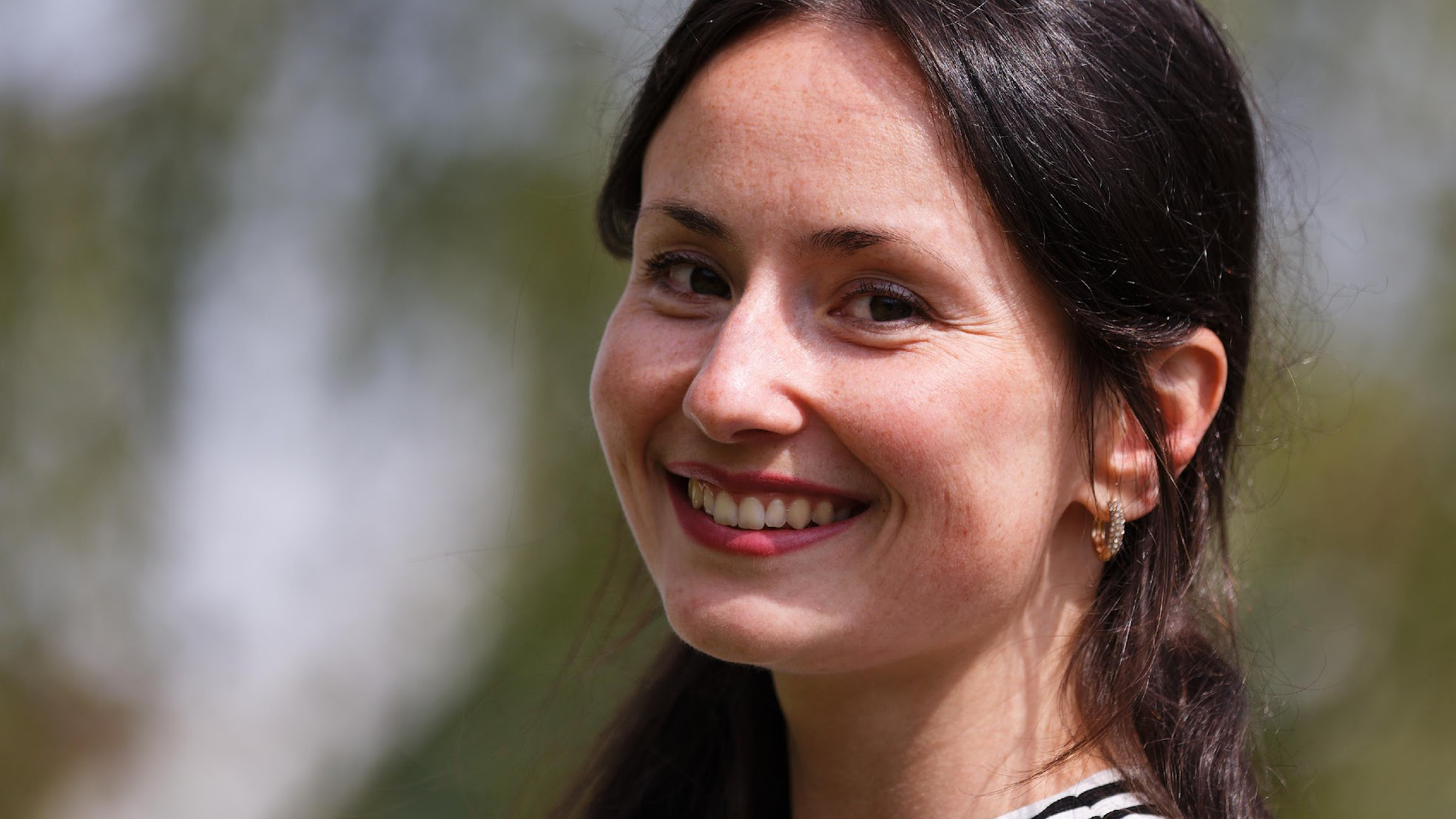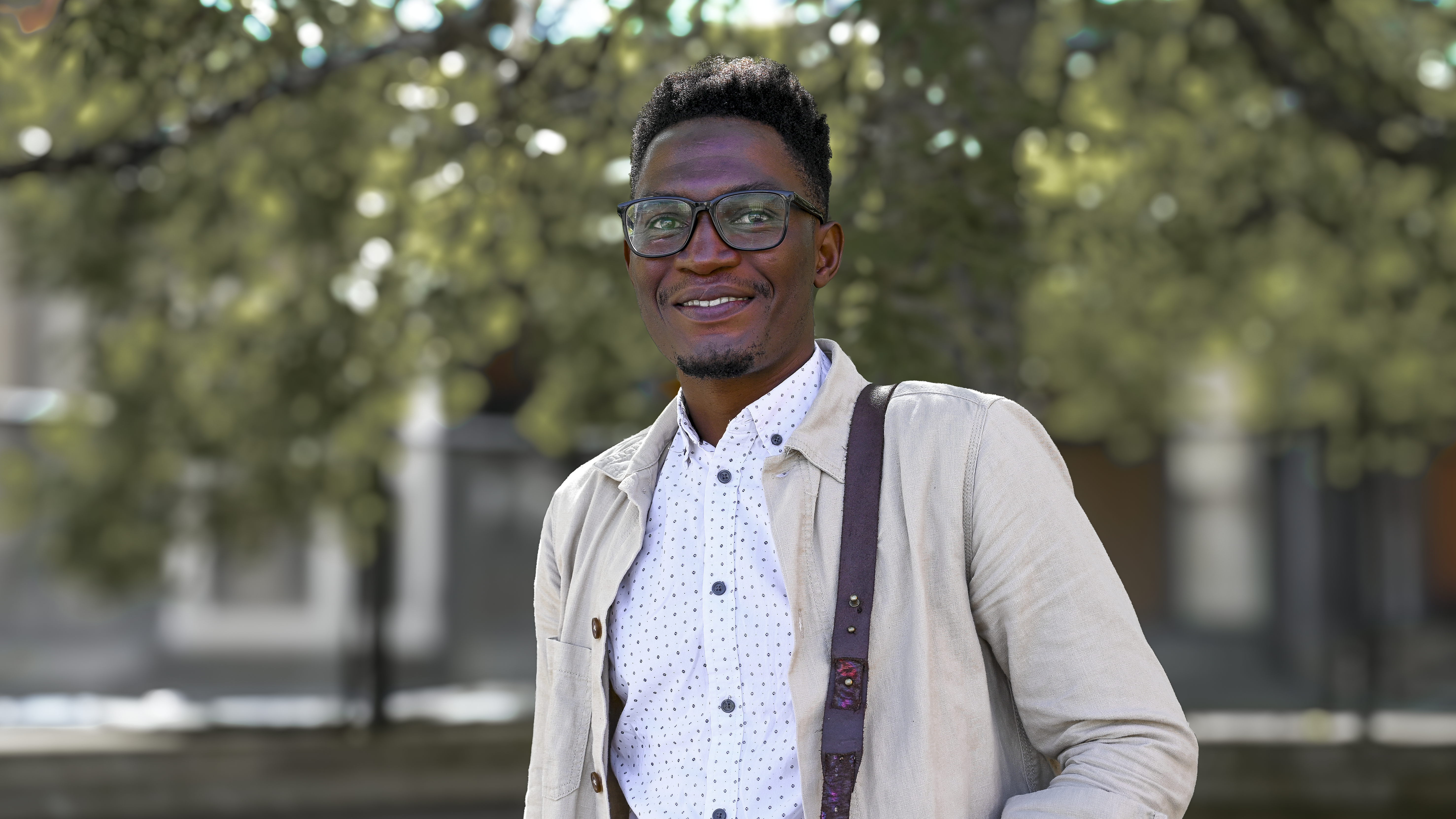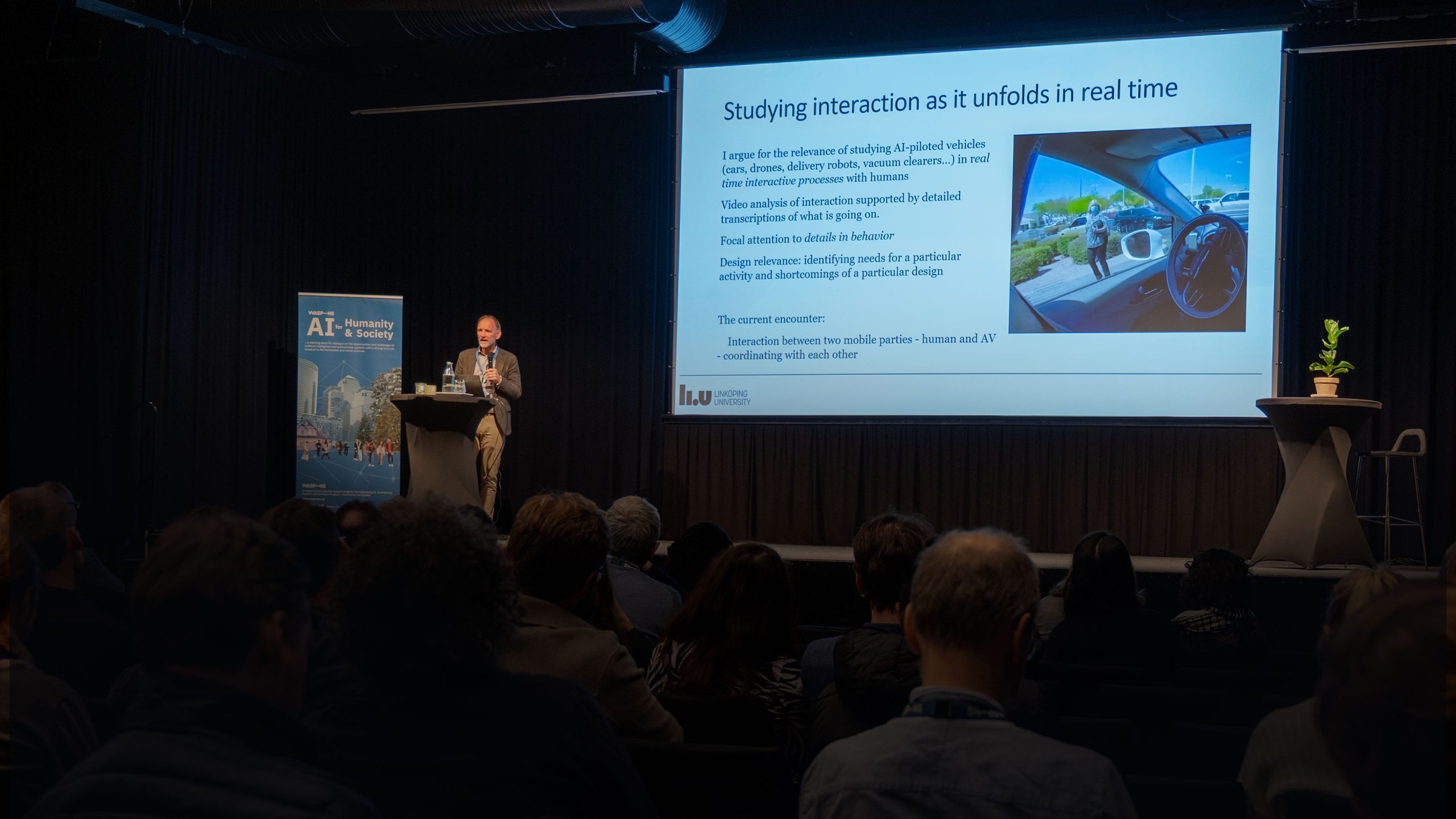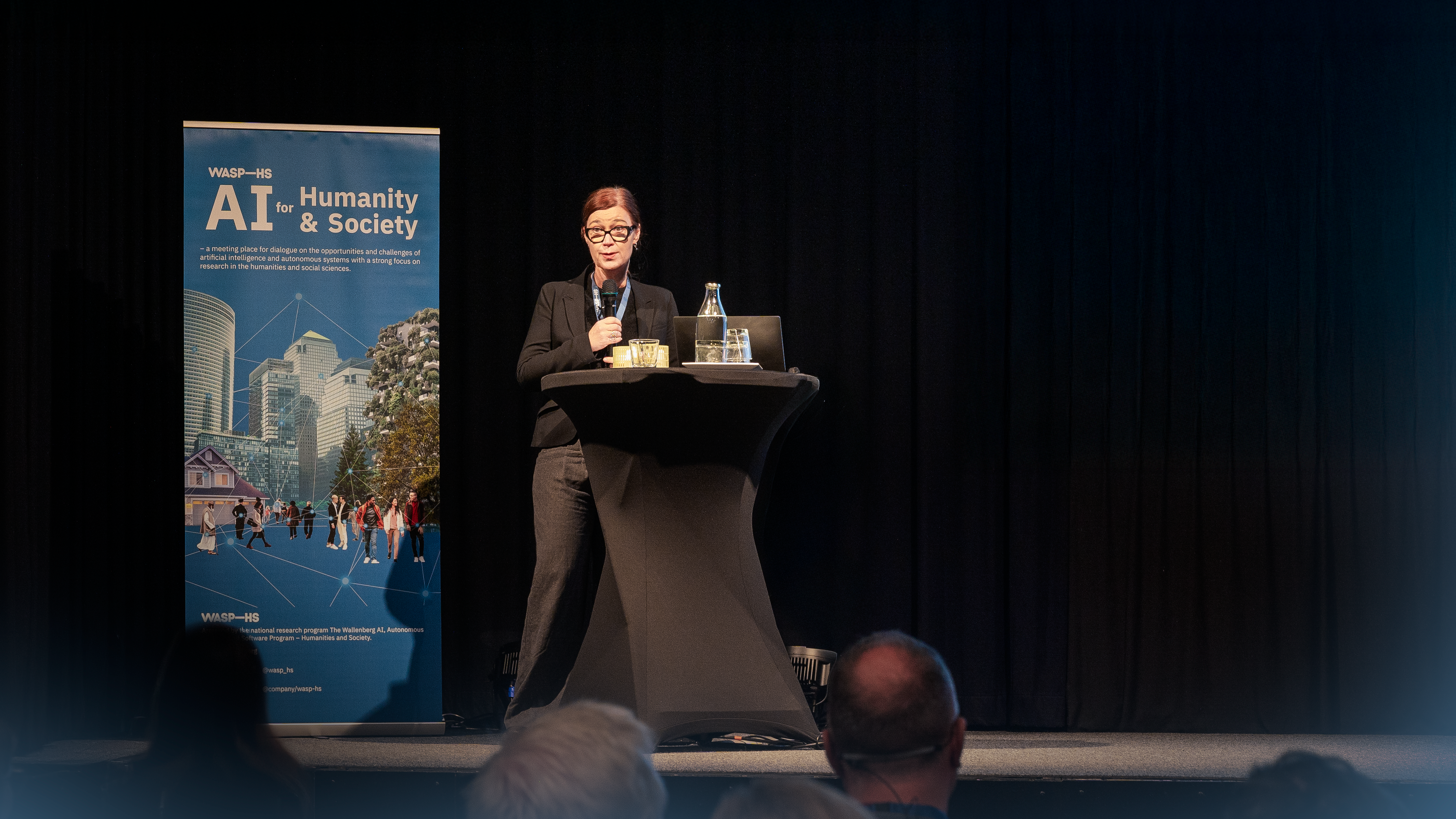After taking the train south, from my home department at Chalmers in Gothenburg, I arrived in Copenhagen. A city of hygge and the best food destination in the world – according to both rankings and my own experience. Copenhagen University came to be my home for three months during the fall of 2023. A home full of warm colleagues, stimulating conversations, lively seminar culture, sharp critique interwoven with kind gestures, frequent celebrations, and a true role model as my mentor. In this text, I talk about how vitally important my study visit abroad has been for my research on the social aspects of AI. After providing a brief introduction to my work on the construction of AI at NASA, I share some fascinating perspectives on data work which I learned more about at Copenhagen University.
Observing Researchers Constructing AI at NASA
In my work, I draw on ethnography with scientists and programmers at NASA Goddard Space Flight Center, who construct AI tools. These tools are aimed to facilitate scientific analysis in NASA missions to search for signs of life and habitability in outer space. Building upon Science and Technology Studies (STS), my work contributes to the undoing of AI by paying attention to how organizations, objects, humans and their decisions transform technology and how technology in turn transforms our understanding of the world. More specifically, I am curious about which understandings of life are included and excluded in the construction of the tool, and how the development of the tool impacts our understanding of life.
Analyzing Material in a New Research Environment
While preparing for my second field trip to NASA Goddard Space Flight Center in Maryland, I was already planning for another trip abroad, to analyze my ethnographic material in a new and stimulating research environment. Copenhagen proved to be a great choice with its lively STS community.
I joined the research group MeInWe led by Professor Mette Svendsen, an anthropologist, at Copenhagen University. MeInWe is studying how personalized medicine, dependent on large infrastructures of data, is introducing new understandings of health and disease, as well as how it contributes to the shaping of the personal (Me) and the collective (We) in the Danish Welfare state. The group’s research is aligned with my work in terms of the methods we use (ethnography), as well as the questions we pose about the intersection of the technological and the biological in life sciences. Halfway through my doctoral studies, I was lucky to meet Professor Mette Svendsen, the PI of MeInWe, when she joined our STS division at Chalmers as an opponent for one of my seminars. Since then, with her wisdom and generosity, Professor Mette Svendsen has been a fantastic mentor and a true role model.
The goal of the three month visit was to participate in an engaging research environment and come back home with new perspectives on my ethnographic material from NASA. But visiting MeInWe has surpassed my expectations. The warm seminar culture showed me that sharp critique and kindness are not mutually exclusive. There is a strong sense of community, shared with frequent celebrations at the division. The kitchen table is always full of pastry with colleagues wanting to celebrate their birthdays, a prolonged contract, the first or last day at work. The blueberry cake I brought as a thank you during the last day at the office was certainly not the last occasion I engaged with the MeInWe group. Hospitality of the group was an important precondition to feel comfortable and flourish as a researcher. I could not wish for a more enriching experience, with so much food for thought about how to conceptualize AI.
A New Lens for Studying the Digital in Life Sciences
With empirical studies of researchers, clinicians and patients, MeInWe has made many interesting contributions to understanding of the digital. Most importantly, the focus of the group is on the mutual constitution between the everyday practices of researchers, clinicians, patients, and the local, regional and global contexts they are part of. I will continue with a brief review of how MeInWe has studied the role of AI in healthcare, and then turn to their use of the concept ”attachment”, which I find especially fruitful for capturing the relations involved in data work to construct AI.
AI as an Infrastructuring Entity
To understand the role of AI in healthcare, Gjødsbøl etal (2024) study the reception of an algorithm to support decision making amongst cardiologists. At the moment, AI is not necessarily ready to facilitate professional decision making in diagnosis. However, this should not divert our attention from the prevalent role of AI. It is important to keep in mind how the tool works as an infrastructuring entity.
”Regardless of their effects on clinical outcomes in the present, these ‘proofs of concept’ or ‘ice-breaker’ algorithms pave the way for new, yet-to-be-invented, algorithms that will transform our practices and experiences of health and disease.” (Gjødsbøl etal, 2024, p. 10)
The authors show how the focus on the technological development suspends questions about whether the algorithm is meaningful to use in the medical context. Even though the tool has not attained its objective of diagnosing, it still contributes to changing the practices and understanding of phenomena in the medical context. In this sense, the authors show how AI can bring change merely through the pursuit of constructing and introducing a tool. The accelerating AI development shifts the attention away from discussions of legitimacy in algorithmic decision making.
Inclusion and Exclusion in Data
Data-driven solutions in medicine, as Green and Svendsen (2021) argue, are not necessarily a more objective estimate of health care needs. The digital tools are based on particular assumptions of what the data stands for, which can entail blind spots for the lack of representation of particular groups in society. Following this, the data-driven solutions in healthcare can entail different accuracy for different groups in society, reinforcing structural injustice. It is crucial to bring attention to what population constitutes datasets and who is excluded.
Often invisible social relations in the datasets constitute not only population, Green and Svendsen (2021) point out, but also the person. For instance, through how our digital traces are used to adjust advertisements, suggesting what we should buy or for whom we should vote. Turning the focus towards both the constitution of population and the individual through datasets reflects the focus of the research group – studying the constitution of the person and the collective, the Me in We.
Attachment
A lot of the group’s work ties to the concept of attachment. Studying the digital by studying attachment can illuminate the subtle nuances in the social relations that constitute AI. It brings attention to the closeness and distance between entities. Attachment stands for a moral relationship tying a person to another person or thing. Detachment on the other hand, entails a loosening of that relation. Instead of seeing these two concepts as a strong dichotomy, Navne, Svendsen and Gammeltoft (2018) suggest that attachment and detachment can be expressed as a continuum.
Digital data records can foster new kinds of relationships and attachments. Navne and Svendsen (2022) have shown how the use of international genetic databases creates new experiences of relatedness, despite the anonymity of the patients involved. Without shielding the personal names of patients, strangers become tied to each other through sharing unique genetic mutations. Navne and Svendsen (2022) suggest that these relations can be understood as de novo sibilingship, since patients can experience an affinity and belonging to a community that shares a genetic mutation. This is not to suggest that de novo sibilingship, through anonymity, shares the moral and social implications of siblings. But the authors conclude with an interesting perspective of how datafication impacts these social relationships.
”The possible immortality surrounding the life of data in precision medicine can in some ways make de novo kin appear more permanent than conventional kin.” (Navne and Svendsen, 2022, p. 1173)
Patients can experience relationships of belonging with anonymous others, by imagining how lives with a particular genetic mutation might turn out. They do so through access to digital records, that persist beyond the lives of patients.
Attachment is also very prominent between researchers and the data they produce. Pinel, Prainsack and McKevitt (2020) have studied ”the affective and attentive relationships that humans build with data”. Conceptualizing the data relations as care, the authors show how researchers in a laboratory form ”long-term relationships with the data they help produce, and feel responsible for its flourishing and growth” (Pinel, Prainsack and McKevitt, 2020, p. 175). Care for data has been shown to be important for valuation in data-intensive research.
The concept of attachment can also be used to understand the relations of data that moves across contexts. In their article about data flows between laboratories, Pinel and Svendsen (2024) draw upon the concept of domestication and show how data becomes attached to a ’home’. Through storytelling about the origins of data, standardization, formatting and cultivation in a particular laboratory, data becomes domesticated into a ’home’, which provides them the status of valuable tools. What is noteworthy is the mutuality of the domestication process. The authors show how ”by domesticating and imprinting their data, the lab also domesticates and imprints its staff. Domesticating data entails domesticating people.” (p. 14) Moreover, using the concept of ’home’ in the context of global data economy nicely ties the etymology of the terms – the Greek origin of ’economy’ where the ’oikos’ means ’house’ and ’nomos’ means ’management’. Seeing the global data economy in terms of a household management, where data is shaped to belong into its home, provides an interesting perspective about the valuation processes of data (p. 19). As interesting as it is to study how data is domesticated, it is just as important to pay attention to which data are not allowed into a ’home’ and remain untamed.
I have discussed how attachment can be used to articulate human entanglements, as well as relations to things, such as digital data. Attention to attachment can also render more visibility to the relations between data and the stakeholders tied to them, and its political implications. Skovgaard and Svendsen (2023) look at the complex and multiple attachments and detachments emerging between actors in the reuse of health data in Denmark. The concerns of actors who are attached to data are silenced in the policy papers aiming for increased use of health data. This negligence, authors argue, can challenge the legitimacy of the governance of health data.
Conclusions about Study Visit Abroad
A few months after my stay with MeInWe, when the group was at the finalizing stage, I joined their last conference in the astonishing venues of Carlsberg Museum in Copenhagen. The project is indeed ending, but it has given birth to countless new collaborations amongst researchers. So, in a sense, the project lives on. And it certainly does so in my own work. The attachments and detachments in data work, data outliving its producers, the notion of inclusion and exclusion in datasets, AI as an infrastructuring entity. The stimulating conversations during my stay with the group are still echoing, while I write the story about building AI at NASA.
References
Gjødsbøl IM, Ringgaard AK, Holm PC, Brunak S, Bundgaard H. (2024). The robot butler: How and why should we study predictive algorithms and artificial intelligence (AI) in healthcare? DIGITAL HEALTH. doi:10.1177/20552076241241674
Green, S., & Svendsen, M. N. (2021). Digital phenotyping and data inheritance. Big Data & Society, 8(2). https://doi.org/10.1177/20539517211036799
Navne, L.E. and Svendsen, M.N. (2022). De novo kin: sharing data, shielding persons, and forging relatedness in precision medicine. J R Anthropol Inst, 28: 1159-1176. https://doi.org/10.1111/1467-9655.13817
Navne, L.E., Svendsen, M.N. and Gammeltoft, T.M. (2018). The Attachment Imperative: Parental Experiences of Relation-making in a Danish Neonatal Intensive Care Unit. Medical Anthropology Quarterly, 32: 120-137. https://doi.org/10.1111/maq.12412
Pinel, C., Prainsack, B., & McKevitt, C. (2020). Caring for data: Value creation in a data-intensive research laboratory. Social Studies of Science, 50(2), 175-197. https://doi.org/10.1177/0306312720906567
Pinel, C., & Svendsen, M. N. (2024). Domesticating data: Traveling and value-making in the data economy. Social Studies of Science, 54(3), 429-450. https://doi.org/10.1177/03063127231212506
Skovgaard, L., & Svendsen, M. N. (2023). Use of tissue and health data: attachments and detachments among an enabling public. New Genetics and Society, 42(1). https://doi.org/10.1080/14636778.2023.2215912






